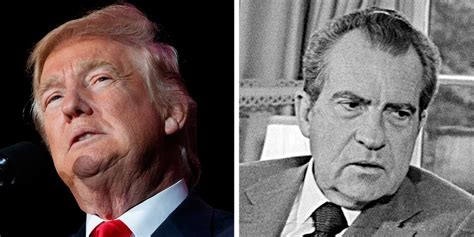Once upon a time in the realm of U.S. politics, there was a man who believed that being a little crazy and unpredictable could actually be an advantage. This man was none other than Donald Trump, the 45th President of the United States.
When he first embarked on his journey to the White House in 2016, Trump made it clear that he was not your average politician. He embraced anger and madness as part of his persona, proudly declaring his willingness to accept the mantle of fury. His boisterous presence and bold statements set him apart from traditional leaders.
In the ancient annals of political strategy, there existed a concept known as the “madman theory.” It was Richard Nixon, another commander-in-chief known for his unorthodox methods, who popularized this notion. The madman theory postulates that by projecting an image of unpredictability and irrationality, a leader can coerce opponents into making concessions they wouldn’t otherwise consider.
As history would have it, Nixon’s attempts at employing the madman theory during the Vietnam War didn’t yield significant results. Yet, generations later, here was Trump, reviving this audacious approach on the modern stage of global diplomacy.
“Most perceived madmen do not benefit from their madness reputations.”
But could Trump truly pull off what Nixon couldn’t? Would world leaders buy into his erratic behavior or see through it? As scholars delved into these questions, one name emerged: Roseanne McManus from Penn State University.
McManus dedicated her research to unraveling the enigma of the madman strategy. Her findings hinted at a nuanced truth – under specific circumstances and with delicate balance, acting like a madman might just work. It wasn’t about being genuinely insane; rather, it was about creating an illusion to achieve strategic goals.
Trump danced on this thin line throughout his presidency – taunting North Korea with threats one moment and renegotiating trade deals with South Korea using intimidation tactics another. His performance as a self-proclaimed madman garnered mixed reviews but managed to secure minor victories on some fronts.
Yet behind closed doors in Washington D.C., whispers abounded about Trump’s erratic tendencies and impulsive decision-making processes. Staff members like Rob Porter found themselves playing mediator between their boss’s wild ideas and pragmatic reality.
Storytellers like Bob Woodward immortalized these chaotic moments in books like “Fear,” painting vivid portraits of an administration teetering on the edge between calculated brinkmanship and sheer chaos.
What lessons could be gleaned from this political theater? Was there genuine method beneath all that madness?
The saga continued as Trump geared up for his second term – armed with experience but burdened by skepticism. The world had grown wise to his antics; allies knew how to placate him while adversaries treaded cautiously around his bombastic declarations.
As pundits speculated on whether Trump would double down on his madman persona or pivot towards more conventional strategies, one thing remained certain – in politics where perception is reality and reputation is power, playing the role of a madman isn’t without its perils.
Would Trump defy expectations once more or would reality finally catch up with fiction? The stage was set for another act in this drama-filled presidency as uncertainty loomed large over international relations.
And so concludes our tale of power wielded recklessly in pursuit of influence – where madness meets method in the intricate dance of diplomacy.

